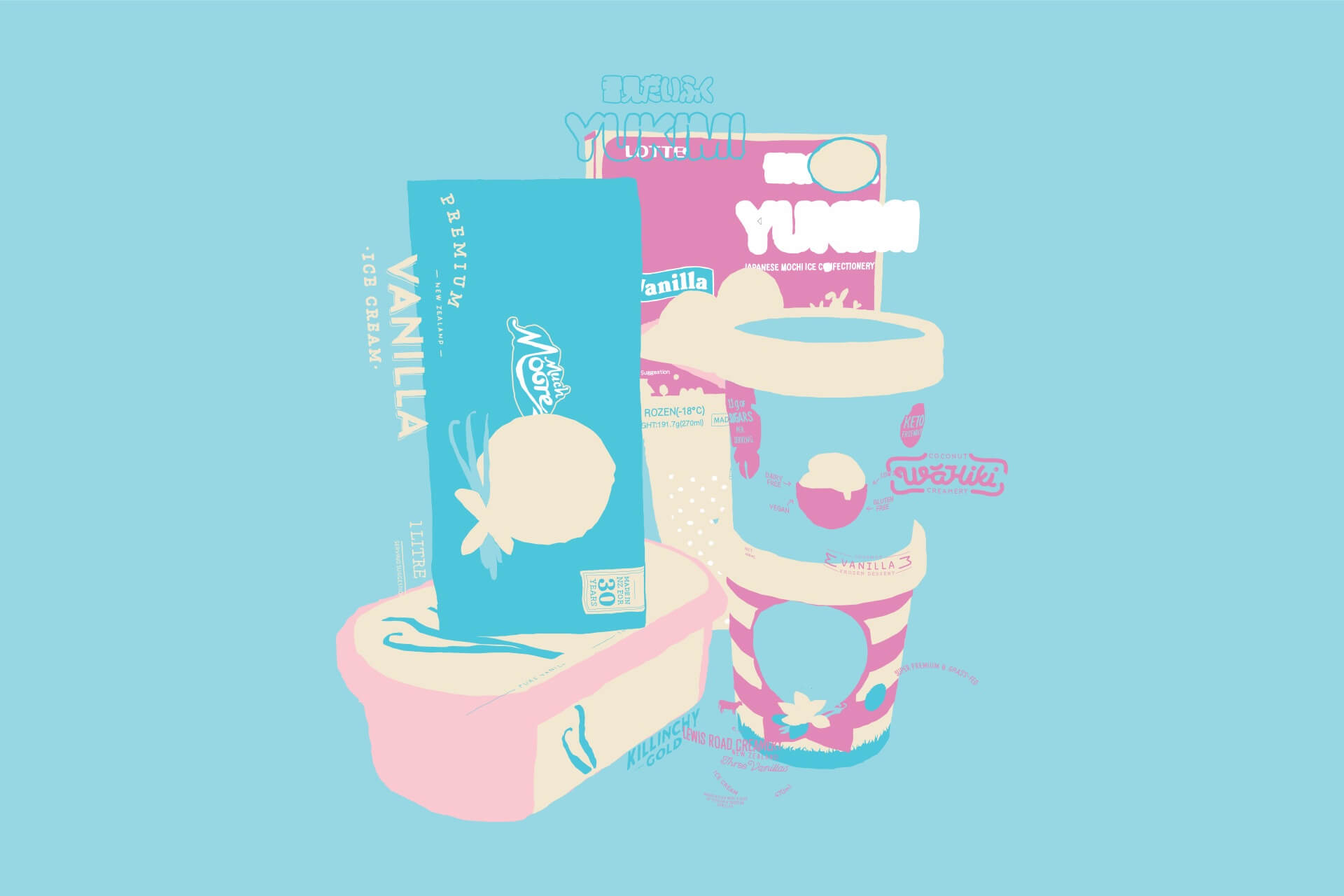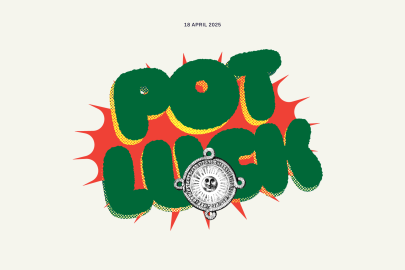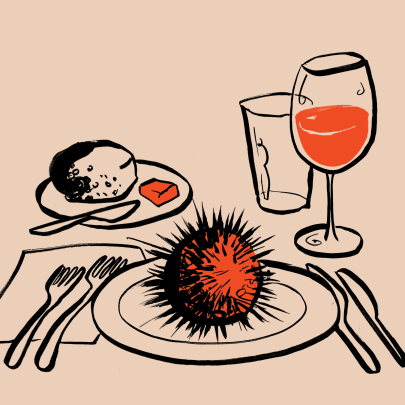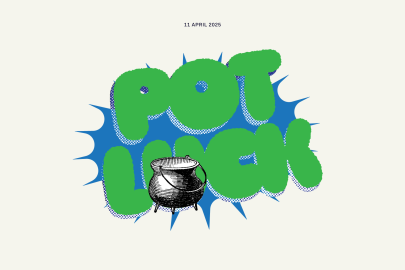Feb 24, 2023 Food
The Smart Scoop by Breville is a hefty, bread-maker-looking hunk of silver metal which plays ice-cream-truck music when it’s nearing completion of the churn cycle. It was brought into my life by my flatmate, who is the sort of person who saves Instagram posts from Gelato Messina (arguably the most popular gelato chain in Australia) and tries to recreate them in her spare time. I loved the period during lockdown when we would run rapidly out of tea spoons because we were constantly tasting what was in the churner, or the cream mixture, or the custard. It made me feel like we were exercising some sort of creative muscle in a deeply uncreative time. The only unhappy camper was our overflowing freezer.
The appeal of making ice cream was there long before the ice-cream maker arrived. I’m convinced that MasterChef Australia is responsible for the boom in home ice-cream making. Every episode seemed to feature a contestant whose survival in the competition rested on the execution of their basil sorbet, or their ‘savoury’ chilli-oil-and-fig-leaf ice cream. Tense music would play; later, triumphant music would play as the judges declared the quenelled scoop ‘inspired’ or ‘imaginative’. It seemed as if the limitless experimentation that the ice-cream form offered was a real hit with people who valued food, maybe because the juxtaposition of a childish frozen treat and a ‘gross’ grown-up flavour was transgressive and attractive to chefs. It’s kind of like the final frontier — a way to experience familiar tastes through a creamy, romanticised lens. Either way, it worked for me.
If you’re just starting out on your ice-cream-making journey, the book you get recommended the most is The Perfect Scoop by David Lebovitz. There’s also Van Leeuwen Artisan Ice Cream by Laura O’Neill, Ben Van Leeuwen and Pete Van Leeuwen, and Salt & Straw Ice Cream Cookbook by Tyler Malek and JJ Goode, both of which I’ve also read. But The Perfect Scoop really is the perfect scoop. Lebovitz doesn’t tend to use xanthan gum or other stabilisers, though many of his recipes use what’s called the ‘French-style’ method, meaning custard based. Custard-based ice creams require you to temper egg yolks with hot milk — you have to be pretty careful not to end up with scrambled eggs — but Lebovitz has a visual guide for what every step is supposed to look like, which I found eternally helpful. The alternative to custard-based ice creams is called ‘Philadelphia style’, in which milk or cream is just mixed with sugar and flavourings.
When you’ve nailed the basics and start going crazy (i.e. off recipe), it gets way harder to nail the appropriate ratios of water, fat and sugar. The additions you put into a standard base can cause a lot to go wrong: less sugar or less fat can make ice cream icy, so it becomes coarse and too hard. If you churn too much, it can go lumpy. If you don’t use enough (or any) stabiliser, it melts too quickly. As with making sourdough, it is incredibly easy to get scientific and granular about making ice cream — if you really want to break everything down into percentages, and exact composition, and the effect of refrigeration during the process, you totally can. And people do. It’s all part of the fun.
VANILLA ICE CREAM TASTE TEST
For the best vanilla ice cream experience, I recommend eating it with either a drizzle of good-quality olive oil and a pinch of sea salt on top; mild chilli oil; or a hot slice of apple pie.
Disclaimer: All ice cream is tasted after being slightly softened out of the freezer. This is not an exhaustive tasting, and only includes ice cream available at the supermarket, not scoop shops. (PS — I like Tip Top just fine.)
BY ORDER OF MERIT:
1. Motueka Creamery Mt. Arthur Snowfall Vanilla
$9.49 for 1L
I’m not sure why or how, but this vanilla version from Motueka Creamery almost has a buttery quality to it — a rich, full, lingering creaminess that lends itself well to the sweet vanilla flavour. The smooth-softness is similar to the Killinchy (below), but it tastes a tad less artificial and more luxurious. Great value for its price point.
2. Killinchy Gold Pure Vanilla Bean
$10.99 for 1L
Call me superficial, but I do enjoy when you can actually see the vanilla bean seeds in the ice cream. (My friend suggested that as part of this test I let 2g of each ice cream melt and then count how many seeds were left in the melted cream. I said she was welcome to do that if she wanted to.) Killinchy has around 0.5% vanilla bean, meaning you can kind of feel the seeds in your mouth, and resulting in a very vanilla-forward flavour, smooth and creamy. She tastes good with olive oil!
3. Lewis Road Creamery Three Vanillas
$11 for 470ml
Obviously, the fact it has three different types of vanilla doesn’t mean anything to me — how am I supposed to know the difference between Madagascan and a “hint” of Tongan and Tahitian? But it is creamy, with a very rounded mouth feel — lasts in your mouth for ages . Probably the most pleasant ‘eating’ experience, but wasn’t as vanilla-y as I expected.
4. Kapiti Vanilla Bean
$11.49 for 1L
This reminds me most of the cream you’d get in patisserie or cakes — you know, when you buy a cream puff from the bakery or something. The initial scoop is really smooth, really velvety, really creamy. Have it with a slice of somethin’ somethin’.
5. Pure NZ Vanilla Bean
$11.50 for 500ml
This one is made up of 1% vanilla bean, though you can’t see the seeds in it (which, as a visual learner, I didn’t find helpful). With vanilla extract in it too, the ice cream had a slightly ‘artificial’ flavour alongside the vanilla bean. To me, it tastes much more mellow — and not as smooth, with a grainier texture.
6. Deep South Vanilla Bean
$9.49 for 950ml
The Deep South variety doesn’t taste like anything really. (I check the ingredients list and it says 0.03% vanilla bean, as well as vanilla bean “sauce”.) It does have a good texture, with a taste sort of in-between vanilla bean and a more extractly flavour. Fresh and refreshing!
7. Wahiki Coconut Vanilla
$10 for 480ml
The actual texture is fine, and it emulates a vanilla ice cream flavour, as long as you’re prepared for the fact that it isn’t going to taste like your traditional vanilla. Weirdly, it doesn’t taste much like coconut, either? Though it’s 36% coconut milk? Maybe it’s because the first ingredient is just plain water.
8. Much Moore Premium Vanilla
$4 for 1L
I bought this because I was intrigued as to why it came in a cardboard box. Could you carve it up into little cubes— fun for the whole family? Just add wafers, I guess, and you have ice-cream sandwiches. But listen, there is no vanilla in this. This is pure sweetness, pure summer-road-trip-realness. If you like that, you’ll like this.
9. Zilch No Added Sugar Vanilla
$10.99 for 946ml
I have to admit that the reason I included this in the tasting was because someone brought it to a barbeque I had a few months ago and it had remained uneaten. It doesn’t say what percentage vanilla bean this has, but it is not sweet. It’s sort of like tasting the plastic version of the thing — you know when you see fake donburis or ramen in the glass display windows in Japanese restaurants? It’s like eating that.
Bonus: Yukimi Mochi Vanilla
$7 for 300ml
Not technically a vanilla ice cream, but a mochi with vanilla ice cream in it. I nonetheless recommend this as a very good vessel for ice cream — soft, pillowy, with extra childish joy because in appearance it looks like it’s been dusted with icing sugar or something. And it’s bite-sized!
–
This story was published in Metro N° 437.
Available here.






